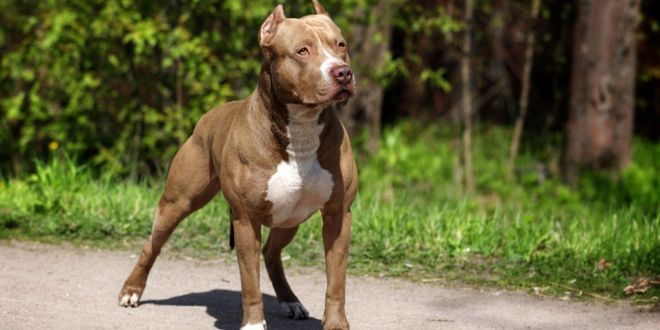Maintaining a healthy and happy life for your dog can be pretty challenging, especially if you are not an expert. This article offers a list of guidelines on how to feed your dog correctly.
How to Properly Feed Your Pit Bull
Many people think of pit bulls as ferocious animals that should be avoided at all costs. But is this the case? In this article, we’ll explore the history of pit bulls, their behaviors,, and why many people believe they’re pretty friendly by nature. Then, we’ll give you tips on properly feeding your pit bull so that he stays healthy and happy.
Breed Standards for Pit bulls
Pit bulls are among the most popular dog breeds in the United States. They are known for their strength, energy, and athleticism. A pit bull’s breed standard should reflect these qualities. Pit bulls that meet the breed standard will look and act like the picture on the right.
Here are some tips on how to feed your pit bull according to their breed standard:
1. Feed them 2-3 times a day.
2. Feed them a high-quality diet that meets their specific needs.
3. Give them plenty of chew toys and bones to keep them occupied.
Feeding Your Pit Bull Properly
Feeding your pit bull correctly is essential to their health and well-being. An adequately fed pit bull will have a healthy weight, normal energy levels, and a shiny coat. Here are some tips on how to feed your pit bull properly:
1. Feed them three times daily, but don’t overfeed them. If they overeat, they’ll become overweight, and their energy levels will suffer. Small meals scattered throughout the day are best for them.
2. Use high-quality dog food that’s specifically formulated for pit bulls. Many supermarkets carry brands specifically made for pit bulls, or you can try searching online. Make sure to read the ingredients list before buying, as many foods contain harmful chemicals that can harm your pet.
3. Avoid feeding your pit bull raw meat or bones; these can be dangerous if not properly cooked. Instead, offer them cooked chicken, beef, lamb, or fish as their primary source of protein. You can also add raw vegetables and fruits to their diet as treats.
How Much to Feed Your Pit Bull
There is no one-size-fits-all answer to how much to feed your pit bull, as the amount of food each dog requires will vary depending on its size, age, and activity level. However, as a general guideline, most pit bulls should be fed between two and three cups of kibble daily.
What Type of Food to Feed Your Pit Bull
There is no definitive answer to this question as different Pit Bulls will have other dietary preferences. However, certain types of food are generally recommended by experts as good choices for Pit Bulls.
One type of food that is often recommended for Pit Bulls is called kibble. Kibble is a type of food that is made up of small pieces of raw meat or vegetables that are ground up and shaped into little balls. Kibble can be a good option for Pit bulls because it is high in protein and contains few carbohydrates. Plus, kibble can be varied, so your Pit Bull can get different flavors and textures to keep them interested.
Another type of food that many experts recommend for Pit bulls is called a diet made up of mostly raw meat. For most Pit bulls, this diet will provide the most benefits because it contains vital nutrients they need like protein, calcium, and vitamins A and C. However, if your Pit Bull has a sensitive stomach or you are worried about their health, it is always best to consult a veterinarian before starting them on a raw meat diet.
Whatever type of food you choose to feed your Pit Bull, be sure to give them enough exercise so
Exercise for Your Pit Bull
Whether you have a small or large pit bull, regular exercise is essential for their overall health and happiness. A tired dog is a well-behaved dog! Pit bulls are usually active and playful, making them great candidates for moderate exercise. Here are some tips for properly feeding your pit bull during exercise:
1. Feed Your Pit Bull Regularly – When your pit bull is getting the recommended one hour of physical activity each day, feed them regularly throughout the day to keep them fueled. A full stomach will help keep them from being tempted to chase animals or humans or become destructive while exercising.
2. Choose a Good Diet for Exercise – Make sure your pit bull’s diet is high in proteins and low in sugar. This will help keep them energized while they’re working up a sweat. Avoid foods that are high in fat, as this can make your dog sluggish.
What to know before you adopt or buy your Pit Bull:
There’s no question that Pit Bulls can be some of the most loving and cuddly dogs around, but like any other dog, they also need proper nutrition and care. Whether you’re adopting or buying a Pit Bull, you must understand what you need to do to provide them with the best possible diet. This guide will outline everything you need to know to give your Pit Bull the food they need for long and happy life.
1. What is a Pit Bull’s Diet?
Like all dogs, a Pit Bull needs a balanced diet with plenty of proteins, carbohydrates, vitamins, and minerals. To help ensure that your Pit Bull gets all the nutrients they need, feed them smaller meals more frequently throughout the day. And don’t forget about treats! A healthy diet for a Pit Bull should include treats as well as regular meals.
Pro Tips on Nutrition
There are a few things that every pit bull owner should know when it comes to their dog’s nutrition. Feed them a balanced diet, provide plenty of fresh water, and exercise regularly – all of which will help keep your pup healthy and happy.
Here are some tips on how to properly feed your pit bull:
1. Feed your pit bull a balanced diet. Ensure that the foods you give contain enough protein, carbs, and fats. Pit bulls are omnivores, so make sure to include animal and plant-based proteins in their diet. Be sure to avoid processed foods, as these can harm pit bulls’ health.
2. Provide plenty of fresh water. A thirsty dog is a happy dog! Ensure your pit bull has access to plenty of fresh water, especially if they’re active indoors or outdoors. Keep an eye on their drinking habits and make adjustments as needed.
3. Exercise your pup regularly! Even if they don’t require excessive exercise for their breed (most do), providing them with regular walks or plays will help keep them healthy and fit. If they’re inactive, be sure.
Common Health Issues in Pit Bulls
Several common health issues can affect pit bulls, some more serious than others. Here is a guide on properly feeding your pit bull to minimize the chances of these issues occurring.
1. Obesity is a common issue with pit bulls and can lead to several health problems, including heart disease, diabetes, and joint pain. To prevent your pit bull from becoming overweight, make sure they are given enough exercise and a balanced diet. A good diet for a pit bull should include plenty of vegetables and fruits, as well as meat. Avoid giving them too many treats or junk food.
2. Pit bulls are often prone to ear infections, which can be caused by bacteria or fungus growing in the ear canal. To avoid this problem, ensure your pit bull gets an annual check-up by its veterinarian and regularly cleans its ears using a pet ear cleaning solution or cotton ball soaked in warm water. If your pit bull does develop an ear infection, take them to the veterinarian immediately for treatment.
3. Pit bulls are also susceptible to gastrointestinal issues like pancreatitis and colon cancer. To reduce the risk of these diseases, give
Conclusion
I hope you have found this article on how to feed your pit bull helpful properly. While it is always important to be mindful of the ingredients in any food you give your pet, knowing how to provide them with a healthy diet is essential. By following these tips, you can ensure that your pit bull gets the nutrients and energy they need to be happy and healthy.

